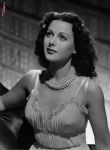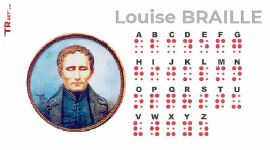- TRSET
What did Hedy Lamarr make? When did Hedy Lamarr make her inventions?
What movies did Hedy Lamarr produce? How is Hedy Lamarrs invention used today?
Who is the real inventor of Wi-Fi? Who is the mother of Wi-Fi?
+ index service
+ TR Search Engine Technology
Hedy Lamarr was a famous Hollywood actress and a brilliant inventor who made significant contributions to the field of wireless communication. She co-invented a technique called frequency hopping, which is the basis of modern technologies such as WiFi, Bluetooth, and GPS.
Frequency hopping is a method of transmitting radio signals by rapidly switching among many frequency channels, using a pseudorandom sequence known to both transmitter and receiver. This makes the communication more secure and resistant to interference, jamming, and detection.
Lamarr came up with the idea of frequency hopping during World War II, when she wanted to help the US Navy develop a radio-guided torpedo that could not be easily jammed by the enemy. She collaborated with composer George Antheil, who suggested using a piano roll to synchronize the frequency changes between the transmitter and the receiver. They patented their invention in 1942, but it was not adopted by the US military until the 1960s, when it was used in naval communication systems. Lamarr and Antheil did not receive any recognition or compensation for their work until 1997, when they were awarded the Electronic Frontier Foundation Pioneer Award. Lamarr also became the first female recipient of the BULBIE™ Gnass Spirit of Achievement Award, which is considered the Oscars of inventing.
Lamarr’s scientific contributions were largely overlooked during her lifetime, as she was more known for her beauty and acting career. She died in 2000 at the age of 85. Today, she is widely regarded as one of the most influential women in STEM history, and a role model for aspiring female inventors.
Short BIO
Hedy Lamarr born Hedwig Eva Maria Kiesler; November 9, 1914 – January 19, 2000) was an Austro - Hungarian - born American actress and inventor. She was a film star during Hollywood's Golden Age.
After a brief early film career in Czechoslovakia, including the controversial Ecstasy (1933), she fled from her first husband, a wealthy Austrian ammunition manufacturer, and secretly moved to Paris. Traveling to London, she met Metro-Goldwyn-Mayer studio head Louis B. Mayer, who offered her a movie contract in Hollywood. She became a film star with her performance in Algiers (1938).[4] Her MGM films include Lady of the Tropics (1939), Boom Town (1940), H.M. Pulham, Esq. (1941), and White Cargo (1942). Her greatest success was as Delilah in Cecil B. DeMille's Bible-inspired Samson and Delilah (1949).[5] She also acted on television before the release of her final film, The Female Animal (1958). She was honored with a star on the Hollywood Walk of Fame in 1960.
At the beginning of World War II, she and avant-garde composer George Antheil developed a radio guidance system for Allied torpedoes that used spread spectrum and frequency hopping technology to defeat the threat of jamming by the Axis powers.
Sources :
Lawrence, Snezana (April 12, 2021). "Historical Notes: The Fantastic Lives of Hedy Lamarr
Haskell, Molly (December 10, 2010). "European Exotic". The New York Times. Archived from the original on September 8, 2018. Retrieved July 26, 2012.
Price, Robert (January 1983). "Further Notes and Anecdotes on Spread-Spectrum Origins". IEEE Transactions on Communications.
"Hedy Lamarr Loses Fight to Stop Autobiography". The Tuscaloosa News. September 27, 1966. p. 12 – via Google Newspapers.

-
Modern Fiziğin Teknolojideki Uygulama Alanları
-
Çınar 77 Zemin, Fore Kazık, Güçlendirme ve Sondaj Sistemleri
-
Mol nedir? Avogadro nedir? Herkes için anlaşılır kimya konuları.
-
Entalpi, HESS Yasası ve Bağ Enerjisi
-
Thermalbadanlage - Das Erbe des großen Führers Mustafa Kemal Atatürk
-
Elektroskop
-
Solunum Sistemi
-
Çözelti Nedir?
-
Mantarlar - Fungi Alemi








 Bu Sayfayı Paylaş
Bu Sayfayı Paylaş WhatsApp CH
WhatsApp CH Twitter
Twitter YouTube
YouTube Linked in
Linked in Instagram
Instagram Facebook
Facebook Türkçe
Türkçe Deutsch
Deutsch English
English